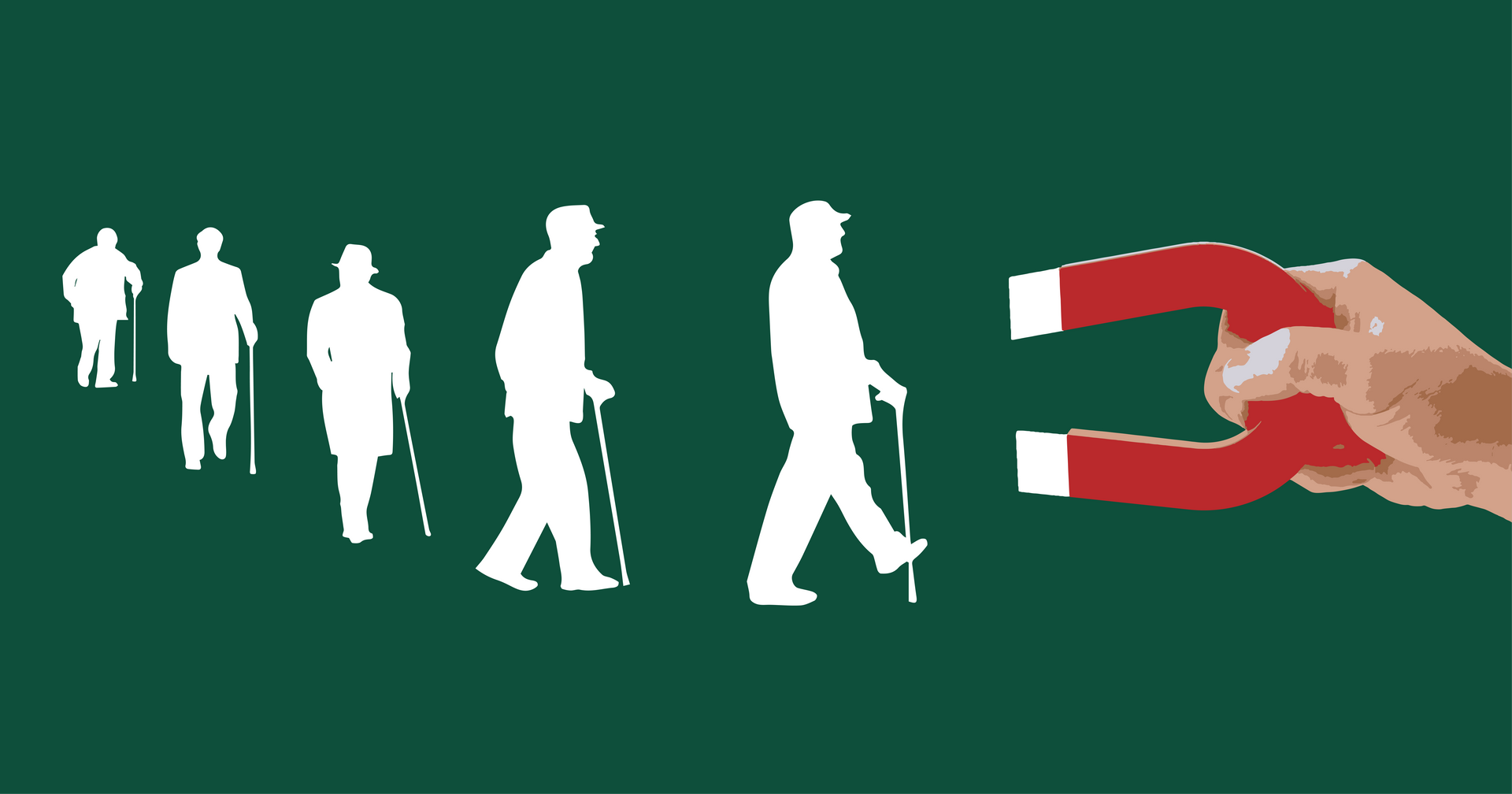The Lingo of Gen Z: Understanding their Chat-Speak

From cryptic acronyms to colorful expressions,' the vocabulary of 'Gen Z' has its own secret codes. The linguistic landscape of the younger generation is becoming more of a cultural phenomenon, and it's redefining the way we talk and connect both on social media and in real life.
In today's workplace, we've got a variety of folks from different generational camps—boomers, Gen Xers, millennials, and those fresh-faced Gen Z kids—all crammed under one digital roof. You know what that means, right? The quirks of each generation are popping up like Whack-a-Mole at a carnival.
Are You in the Know: Gen-Z Office Lingo Challenge (Courtesy: The Guardian)
Suppose your colleague shoots you a message, but you can't tell if they're dropping some hip Gen Z slang or if it's just another language from Mars. The potential for confusion is real, especially when the youngsters start throwing in their brand-new words and emojis. It's like trying to decipher hieroglyphics!
As more of these tech-savvy Gen Z whiz kids flood into the workforce, you better believe that understanding text and emojis is going to be the next big job skill. These digital natives are taking over, and you don't want to be the one scratching your head when they send you an emoji that looks like something from the Matrix.
We're talking big numbers here, guys. According to a study by Oxford Economics, the Gen Z squad is gearing up to triple in numbers in the United States, Australia, France, Germany, the Netherlands, and the United Kingdom by 2030. They're aiming for a 30 percent slice of the employment pie and bringing their funky digital lingo with them.
Decode the 💀 reaction from your Gen Z coworker. What do you think they're trying to express?
For the Gen Z crew, affectionately known as "zoomers," emojis are like their secret language, and they're not just taking them at face value, It means Laughter.
In this case, the connotation of the skull centers on the idea that the person is “dying from laughter” or that the comment was so funny that the person is dying/dead, she said. A good chunk of Gen Z's humor comes with a side of cynicism, as per Roberta Katz, co-author of the book "Gen Z, Explained: The Art of Living in a Digital Age." So, those emojis, including the skull, might carry meanings that make older colleagues raise an eyebrow or two. That's all part of the Gen Z charm. Their cynical humor is their secret sauce for bonding, especially as they tackle issues like economic uncertainty, climate change, and the looming specter of gun violence. It's like they've got a secret emoji handshake, and the rest of us are just trying to figure out the emoji alphabet!
What could go wrong when you finish a sentence with a period/dot(.) while assigning a task to your Gen Z coworker?
Regarding punctuation, Gen Z has thrown a curveball that might leave their elders scratching their heads. Take the period, for example. While the older generations see it as a simple end to a sentence, Gen Z might interpret it as a sign of anger or coldness. It's all part of the digital-age communication shift.
Why, you ask? Well, Lieke Verheijen, the assistant professor in the know about digital communication at Radboud University, has a theory. She says, "Periods don't really serve a purpose anymore." In the digital realm, every sentence often gets its separate message. So, young folks skip this kind of punctuation altogether.
But here's the twist: Gen Z sees a period as something intentional. To them, it's like a bold statement saying, "This is what I'm saying, period." And, well, it may come across as a tad angry and ice-cold.
You're planning to be 'out of pocket' for a week, and your Gen Z colleague doesn't quite get it. Why?
You see, for Gen Z, that humble period at the end of a sentence isn't just a punctuation mark; it's a warning sign. To them, it signals that things are about to get wild or crazy. It's like the digital-age version of raising the flag of excitement.
But that's not all. You might have thought "out of pocket" meant someone's temporarily unavailable, but Gen Z flipped the script. To them, it's a whole new ballgame. When they say something's "out of pocket," they're not talking about vacation plans; they're saying it's inappropriate or off-the-charts wild.
Sometimes it's intentional, and sometimes it's just because certain words weren't part of the lingo when they were growing up.
Why is your Gen Z coworker feeling concerned after receiving your email requesting a task, that features a smiley face emoji 🙂 at the end?
When you drop an emoji, it can send all sorts of signals to your Gen Z colleague, and it's not always what you might expect.
Gen Z doesn't just see emojis as cutesy little symbols. They're like an art form for them. The range of smiley faces is a canvas for expressing varying levels of enthusiasm in a text-based message. But there's a twist. That plain, ol' smiley face—often auto-converted from a colon and a closed parenthesis, like this “:)” —doesn't get the party started. It's like the emoji version of "meh." In fact, it can even come across as passive-aggressive.
Gen Z will translate it to “Okay, I guess you're not really happy." But don't fret; the game isn't over. If you want to send the right vibes to your Gen Z pals, you might want to opt for the more enthusiastic smiley emojis, like the one with closed eyes and rosy cheeks “😊” or the one grinning with an open mouth “😃”. It's all about emoji artistry, “😄”.
What does it mean when your Gen Z colleague replies to something you said with a nail painting emoji “💅”?
When your colleague drops that nail emoji, they're not just showing off a fresh manicure. No, no, for Gen Z, this emoji is a whole mood. It's all about sass, a touch of pettiness, or just exuding that nonchalant confidence that says, "I'm doing my nails, and I couldn't care less about the drama."
"You're doing your nails and not caring about what else is happening." It's like the digital-age way of flipping your hair and walking away from the chaos.
Roberta Katz highlights a crucial point here. In our online interactions, we miss out on the vocal tones, body language, and facial expressions that provide context for a message. Gen Z knows this all too well, and they're like emoji artists, using these digital symbols to compensate for the missing cues. After all, they were early adopters of texting and learned the art of quick, nonverbal communication, which has become their go-to method for expressing sentiment and intent. So, when you see that nail emoji, remember it's not just about the nails; it's a whole attitude!
What's the intended message when your Gen Z colleague replies to you with the word 'slay'?
Now, let's talk about "slay." You might think it means to, well, actually kill something, but for Gen Z, "slay" doesn't involve any sharp objects or dark intentions. Nope, it's more like "killing it" in the sense of doing something incredibly well. It's the digital-age way of saying, "Wow, you nailed it!"
So, think of "slay" as the Gen Z equivalent of "out of pocket." These are those catchy phrases that become cool among the young crowd. But here's the deal: these phrases are more figurative than literal. They're all about informal language among young folks, as Verheijen explains.
"These catchphrases are super cool for a while," she says. "But give it 10 years, and people will probably think you're just a bit old-fashioned." It's the way language evolves, always keeping us on our toes!
Decode Your Kids and Gen Z Co-workers
If you've ever encountered the day-to-day jargon of Gen Z and found yourself scratching your head, don't worry! Let's decode the cryptic vocabulary shaping online conversations; Not all of them can be linked directly to Gen Z, though it is pretty clear that they are going on to the next stage for lingos in their chats.
Acronyms
- BAE: Before anyone else
- BRB: Be Right Back
- CSL: Can’t stop laughing
- Fam: A term to describe a close friend who is 'like family'
- F: Pay Respect (originated from a video game meme)
- FOMO: Fear of missing out
- GMTA: Great minds think alike
- G2G: Got to go
- GOAT: Greatest of all time
- Hmu: Hit Me Up
- Ikr: I Know Right
- IDC: I Don't Care
- Idk: I Don't Know
- IRL: In real life
- IMO / IMHO: In my opinion / In my humble opinion.
- IYKYK: If you know, you know
- JK: Just kidding
- Lit: Cool or exciting
- LMFAO: Laughing My F***ing Ass Off
- LMAO: Laughing My Ass Off
- OMG: Oh My God/Goodness
- Oof: Expression of discomfort, sympathy, or a reaction to something unfortunate
- ROFL: Rolling On the Floor, Laughing
- SMH: Shaking My Head
- Salty: Getting upset over something menial
- Shook: Shocked or surprised
- Sus: An abbreviation for suspicious or suspect
- Sksksk: A keyboard smash representing laughter or excitement, often associated with the "VSCO girl" trend.
- TTYL: Talk To You Later
- TBH: To Be Honest
- TNTL: Trying not to laugh
- WYd: What You Doing
- Wyd: What You Doing
- YNK: You never know
- YOLO: You Only Live Once
Terms & Phrases
Some other phrases which are being used, again not all of them can be linked with Gen Z but yeh still these are good to know:
- A Real One: A person who is being authentic, genuine, and trusted.
- And I Oop: A phrase used after a funny mistake or accident.
- Awks: Short for awkward.
- Baddie: Name for an independent female who is tough and beautiful.
- Bands: Refers to bands around cash or a wealthy person. No doubt, the dude’s got bands.
- Bet: A willingness to do something means “yes” or “okay.”
- Big yikes: When you see something that is a considerable embarrassment.
- Booed up: To be in a romantic relationship.
- Bop: A perfect song. That song is such a bop!
- Bread or Cheddar: Terms that refer to money.
- Breadcrumbing. Sending flirtatious text messages to another person to get their attention but remain non-committal.
- Bussin: Something is incredible. Her new hair color is bussin’.
- Cake: When someone’s body looks good. The girl in my science class has cake.
- Cap: A term that means “lie” or “false.” He said we were a couple. Cap!
- No cap: A phrase that means “no lie” or “for real” emphasizes telling the truth. I just saw him eat a bug. No cap!
- CEO: A term used to describe something that you’re very good at, making you the CEO of it. I’m the CEO of being late to class.
- Cheug: This term describes a person, idea, or situation that is outdated or inauthentic.
- Clout: A term that relates to a person’s follower count, fame, or influencer status. Sometimes an expression of an extravagant way of living.
- Chasing Clout: A term that describes a person who does and says things for the sole purpose of becoming more popular.
- Curve: To reject someone romantically.
- Cuffing: Wanting to date or cuff yourself to someone temporarily—at least until summer break.
- Do it for the gram: A phrase that describes someone doing something for the sole purpose of posting online.
- Drip: A term that describes someone’s style as sexy or cool. Zayne has some serious drip.
- Facts: When you agree with someone.
- Finsta: A second Instagram account for sharing with a smaller circle of friends and followers.
- Fish: Fishing for compliments.
- Fit: Short for outfit.
- Flex: To show off or show something off.
- Get after it: Start with something with intensity.
- Ghost: Suddenly, stop all contact with someone online and in person.
- Hundo P: Being 100% certain.
- Hypebeast: A term that describes someone who cares too much about popular things rather than being self-aware and genuine.
- I’m dead: Describes how you feel when something is hilarious.
- I’m weak: Like, dead, describes how you feel when something is hilarious.
- I can’t even: An expression used when you’ve had enough of someone or a situation.
- Keep it 100: Stay true to yourself and stick to your values.
- Lewk: Look.
- Left on read: When someone does not respond to your text. He left me on read!
- Lit: Cool or awesome.
- Mood: A term used to express a relatable feeling or experience. Seeing that kid by himself kicking a can is such a mood.
- Mutuals: People who follow and support one another on social media.
- Oof: An expression used when something bad happens, and you don’t know how to respond.
- Periodt: A term used to emphasize what you just said.
- Purr: Expressing approval. I’ve got nothing but purr for my friends.
- Receipts: Evidence to prove someone is either lying. Often in the form of screenshots, videos, or images.
- Savage: A cool person or someone overly direct or candid.
- Sketch: A sketchy or ominous situation, place, or person.
- Skrrt: To leave quickly or get away from someone (the sound a car makes).
- Ship: Short for relationship.
Conclusion
In essence, understanding the unique language of Gen Z is essential for effective communication in today's diverse workplaces. From emojis to slang, their vocabulary reflects a cultural shift, bridging generational divides and fostering connections in an ever-evolving digital landscape. Bringing this linguistic evolution is key to staying connected and relevant in today's world.




